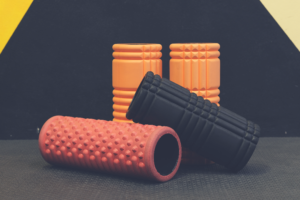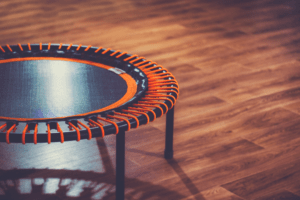Treadmills are one of the best cardio machines in the gym.
Unfortunately, they’re also the machine that causes the highest rate of injuries.
In fact, in data pulled from a report by the U.S. Consumer Product Safety Commission’s (CPSC) National Electronic Injury Surveillance System, from 2012-2014 there were an average of 24,300 treadmill injuries per year.
When used properly, they’re safe and effective.
However, many people use unsafe practices which lead to preventable treadmill injuries.
Here are the most common treadmill injuries as well as how to prevent them.
Foot Injuries
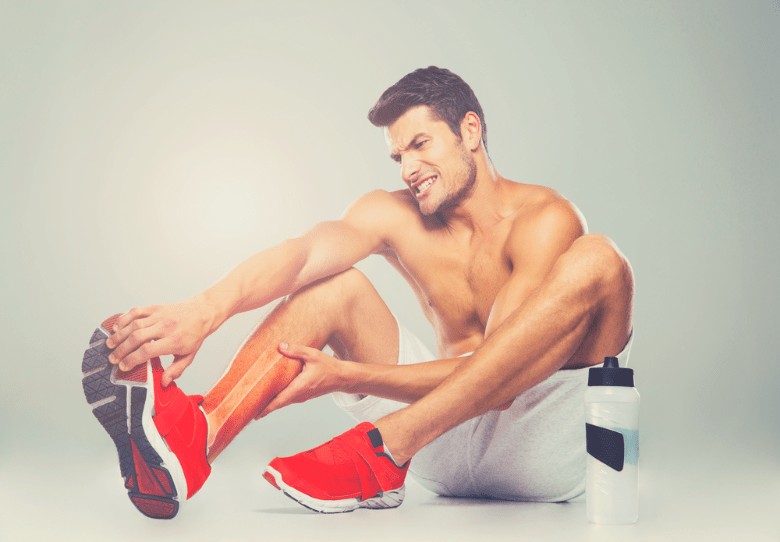
It’s no surprise that there are a lot of foot injuries on a treadmill.
You’re running or walking on a moving belt and it can be easy to lose your footing this way. All it takes is one missed step, even by a few degrees, and you’re tumbling.
Most foot injuries on treadmills occur from overuse of your foot muscles.
It can also be due to improper footwear or improper running form. Many people think that they can just run, but there is a right and wrong way to do everything.
Plantar Fasciitis
Plantar fasciitis is a common foot injury for people who use a treadmill often, especially runners.
This is an inflammation of a thick band of tissue on the bottom of your foot.
It connects your heel to your toes. It can cause stabbing pains as you walk, especially first thing in the morning.
As the muscle unstiffens throughout the day, the pain may subside, but it will return after periods of not walking for a while.
Intermetatarsal Neuroma
Intermetatarsal neuroma, more commonly known as Morton’s neuroma, is a thickening of the tissue between the third and fourth toe.
This most commonly occurs when people wear ill-fitting shoes or wear shoes that have the toes boxed in.
However, it can also be caused by repeatedly irritating the area from running. Treatment can range from as simple as wearing different shoes to as serious as surgery.
Achilles Tendonitis
This occurs when the tendon that connects the calf to the heel becomes inflamed.
The most common causes of this painful condition involves the incline.
People strain their calf muscles on the incline or, even worse, don’t warm up properly before hitting the treadmill.
It can also be due to not wearing good, supportive shoes and not using proper form.
How to Prevent Foot Injuries
As you can see from the information provided, many of the foot injuries occur from running too much and wearing the wrong shoes.
Of course, you want to push yourself on the treadmill, but you need to make sure that your body is prepared by warming up properly.
Don’t do more than you’re ready to do. For example, if you usually run on the second incline level, don’t suddenly jump to the eight.
Work your way up and give your body time to adjust.
Make sure you pick out the right shoes. You should be wearing running shoes that fit your foot type.
The four foot types are neutral arch, low arch, high arch, and flat foot.
- Stability shoes are great for people with normal arches.
- Motion control shoes are suitable for people with low arches or who are flat footed.
- Cushioning shoes are for people with high arches.
With the right shoes, your feet and ankles will be supported so it will be easier to run with proper form.
When your shoes are worn out, throw them away and get new ones.
Knee Injuries
Knee injuries are a common treadmill injury because people are often hyperextending their knee.
This essentially means you are straightening your knees too much. You may have heard it referred to as “locking your knees”.
Some people stand in a hyperextended position and unfortunately run in a hyperextended position.
When this happens, you’re pushing your knee out of its normal range of motion way too much and an injury will occur.
Other knee injuries can occur due to too much pressure being put on the knee or from not using proper form while exercising. This can lead to twisted knees, sprained knees, and more.
Knee Impingement
Knee impingement is also called Hoffa’s syndrome, but is more commonly referred to as fat pad syndrome.
This is due to the mass of fatty tissue that lies just below the kneecap called the fat pad.
Fat pad syndrome occurs when the fat pad becomes inflamed, which can happen due to hyperextension, a direct injury, or chronic irritation.
Luckily recovering from fat pad syndrome is not hard.
It may take a while, but the usual treatment is not hyperextending your knee and limiting positions that cause pain.
Using ice frequently moves the healing process along. It’s rare that a person needs more treatment than this, but severe cases could possibly need surgery.
Patellofemoral Pain Syndrome
Patellofemoral pain syndrome, more commonly called runner’s knee, is a painful condition that is a result of overuse.
At the core, the condition is caused by a misaligned kneecap.
However, this misalignment can be due to not using the treadmill with proper form or excessively training.
Fortunately, it can be treated easily by not using the treadmill till the pain goes away, using cold packs, doing knee strengthening exercises, and more basic treatments.
How to Prevent Knee Injuries on the Treadmill
The best way to prevent treadmill injuries to your knee is to not overwork yourself and to use proper form.
It’s very important to make sure you take rest days like you’re supposed to. If you feel any pain, stop running until you’ve identified the pain and have attended to it.
Make sure you are using proper form when running.
Don’t hyperextend your knees or roll your feet in too much.
Keep your head up and your back straight.
If you can, use a treadmill that has cushioning technology that will minimize the impact to your knees as you run.
Hip Injuries
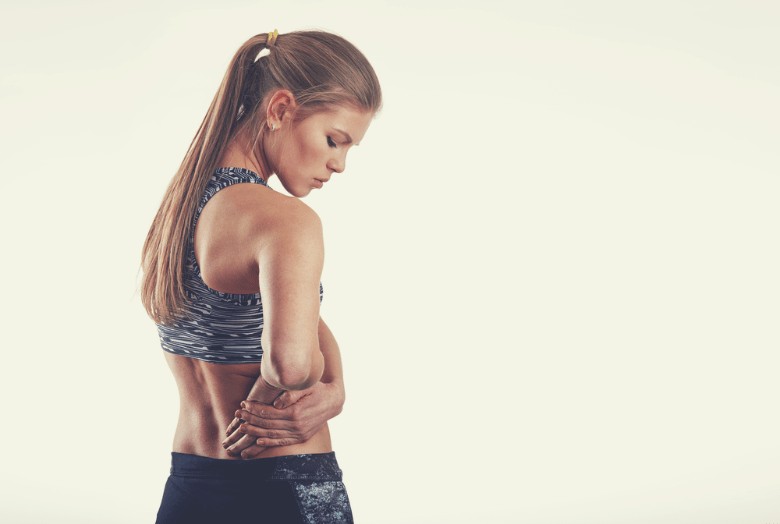
Like foot and knee injuries, most hip injuries come from overuse.
Hip pain is nothing to ignore.
If you’re experiencing it, your body is yelling at you to stop what you’re doing and figure out what’s wrong.
The good news is that it’s usually something that’s fixable as long as you catch the problem early and don’t exacerbate it.
It’s common for runners to develop hip injuries so this is something doctors deal with quite often from people who own treadmills.
Hip Labral Tear
The labrum is a ring of cartilage located around your hip joint. It’s soft and flexible and acts as a gasket to keep the ball joint in place.
It also aids in movement and flexibility of your hip.
People who use treadmills are at a higher risk of getting a tear in their hip labrum.
This is because doing repetitive motions, such as constantly running on a treadmill for long periods of time, can lead to a tear.
Sometimes the tear doesn’t cause any pain or symptoms but other times it could cause pain, a clicking noise/feeling around the hip joint, or a limited range of motion of your hip.
Treating a hip labral tear can be as simple as taking medications or as complicated as surgery.
If your tear isn’t severe, your doctor will likely start you off with medication or an injection of corticosteroids directly into the hip joint.
Of course, you would have to cut out physical activity for a while as your hip heals.
If this doesn’t work or if the case is more severe, surgery will be recommended. This can limit your physical activity for weeks.
Bursitis
Bursitis happens when a part of your body called bursa sacs become inflamed. These sacs act as cushions to keep your bones from rubbing together in your joints.
There are two bursa sacs. One is on the outside, bony point of your hip. The other is on the inside of your hip.
There are two types of bursitis. One is called trochanteric bursitis, and this is when the outside bursa sac is inflamed.
The other is called iliopsoas bursa and is an inflammation of the outside bursa sac. Trochanteric bursitis is more common but they’re both treated similarly.
People who run on treadmills often for long periods are at a higher risk of developing bursitis.
Treatment is usually not too rough, although you may have to limit your activities for a little while.
Your doctor may start you off with medications and physical therapy. It’s rare that surgery is needed for bursitis, but it’s available if needed.
Hip Flexor Strains
Hip flexors are a group of muscles.
They are the iliopsoas and the rectus femoris.
These are the muscles that are used to lift your knee towards your stomach – essentially the movement you do when running on a treadmill. They also help you bend at the waist.
You can strain these muscles from overuse. If you run a lot, for long periods of time, at a fast pace and you don’t get proper rest, you’re putting yourself at a high risk of hip flexor strains.
Hip flexor strains are graded from grade one to grade three.
Most of these injuries are a grade two injury. This means that several fibers are torn and use of the hip flexors is impaired.
The good news is that repairing hip flexor injuries is easy. You just need to get some rest and take over the counter pain medication.
However, in severe cases you may need to see a doctor. It’s rare to need surgery for this condition.
How to Prevent Hip Injuries on the Treadmill
It can’t be stressed enough – get some rest!
Most hip injuries are due to overuse. You need to allow yourself enough time to recover. Even the best runners in the world need time to recover.
Form is also important when it comes to your hips. Having a bad running form doesn’t only affect your knees.
Overtime, running in an awkward position can lead to hip pain and tears. The same can be said for pushing yourself too much.
It’s okay to challenge yourself, but don’t do more than your body can handle. You don’t need to be on the highest incline level to get a good workout.
Falls
Many injuries come from falling on a treadmill.
In fact, over 70% of treadmill injuries are due to falls.
Many people fail to understand that they aren’t running on solid ground. Just because you stop running doesn’t mean the treadmill stops running.
Most falls occur because of simple mistakes – a missed step, trying to board the running belt while it’s running, or pushing the speed past a limit they can keep up with.
It’s rare that a fall on a treadmill will cause death, but it can cause a lot of pain and possibly even broken bones.
Treadmills can even throw you into a wall, so the possibility of injury can occur anywhere on your body.
Head trauma is common since, when most people fall, their face or head tends to hit the running belt.
Many people don’t allow enough clearance space behind the treadmill, so they end up getting thrown into a wall or a piece of furniture.
ASTM International recommends at least six feet of clearance space behind a treadmill for commercial gyms. This isn’t a bad standard to adopt for home treadmills also.
How to Prevent Falls on a Treadmill
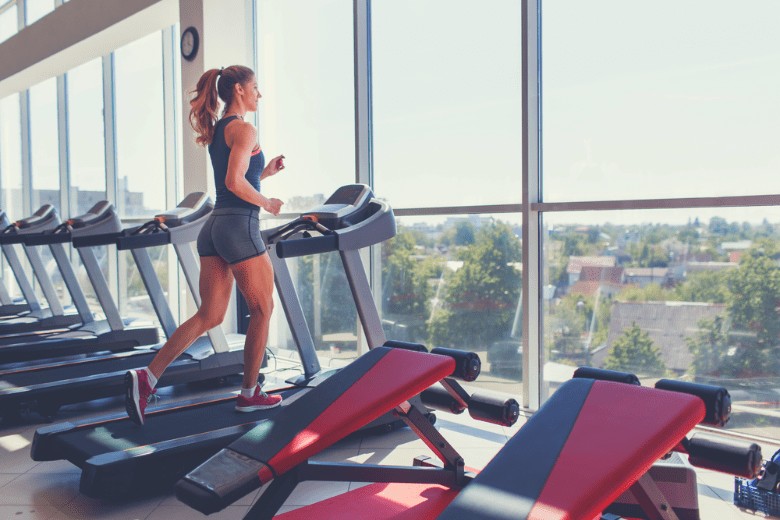
If you have a missed step, that’s an accident and you probably couldn’t have prevented it.
It happens. However, there are stupid choices that people make on treadmills and you can absolutely avoid those.
For example, some people try to do tricks on treadmills. It rarely works out the way you want it to.
Never try to board a running treadmill.
Don’t push the speed faster than you can safely run. Use the emergency stop clip.
It clips onto your clothes and if it’s pulled (as in when you are moving backwards in a fall), it stops the treadmill to reduce any possible injuries.
Overall, just use the treadmill safely.
Final Thoughts on Common Treadmill Injuries and How to Avoid Them
There are a lot of different injuries that can happen on a treadmill, but it’s important to remember that injuries don’t happen often.
Most people use treadmills safely and in the correct manner and the finish their workouts just fine. Treadmills are very safe machines to use.
Treadmill injuries usually occur because of the choices people make while on the treadmill. Some people like to be daredevils while others just don’t know when to stop.
You’re taking the first step in avoiding treadmill injuries by learning about them. This will help you make safe decisions as you work towards your fitness goals.


